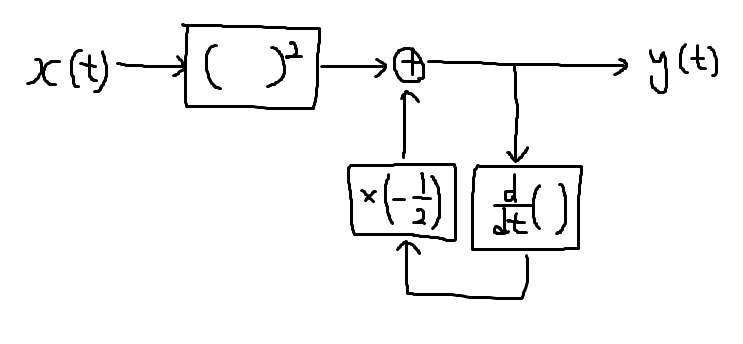The input/output system is $$ \frac{dy(t)}{dt}+2y(t)=2x^2(t) $$
I want to know this is linear? causal? time-invariant? memoryless?
According to solution, the answer is 'Linear if zero initial conditions, causal, time-invariant, with memory'.
My trial:
$$y(t)=x^2(t)-\frac{1}{2}\frac{dy(t)}{dt}$$
Sorry for my poor drawing.
- for input value: $x_1(t)=2x(t)$,
\begin{align}
y_1(t)&=\left(2x(t)\right)^2+\left(-\frac12\right)\frac{d}{dt}\left(y(t)\right)\\
&=4x^2(t)-\frac12\frac{dy(t)}{dt}\\
2y(t)&=2x^2(t)-\frac{dy(t)}{dt}\\
\therefore y_1(t) &\ne 2y(t)
\end{align}
$\because$ not satisfying Homogeneity, Non-Linear.
- The system doesn't have $x(t+k)$. (It means $y(t)$ is not made by $x(t+k)$)
$\therefore$ The system is causal because
for input value: $x_1(t)=x(t-t_0)$, \begin{align} y_1(t)&=x^2(t-t_0)-\frac{1}{2}\frac{dy(t)}{dt}\\ y(t-t_0)&=x^2(t-t_0)-\frac{1}{2}\frac{dy(t-t_0)}{dt}\\ \therefore y_1(t) &\ne y(t-t_0) \end{align}
$\therefore$ time-varying.
The system doesn't have any $\displaystyle\int$.
i.e.) $\displaystyle\int x(\tau) d\tau$.
$\therefore$ memoryless
What is the real solution?

